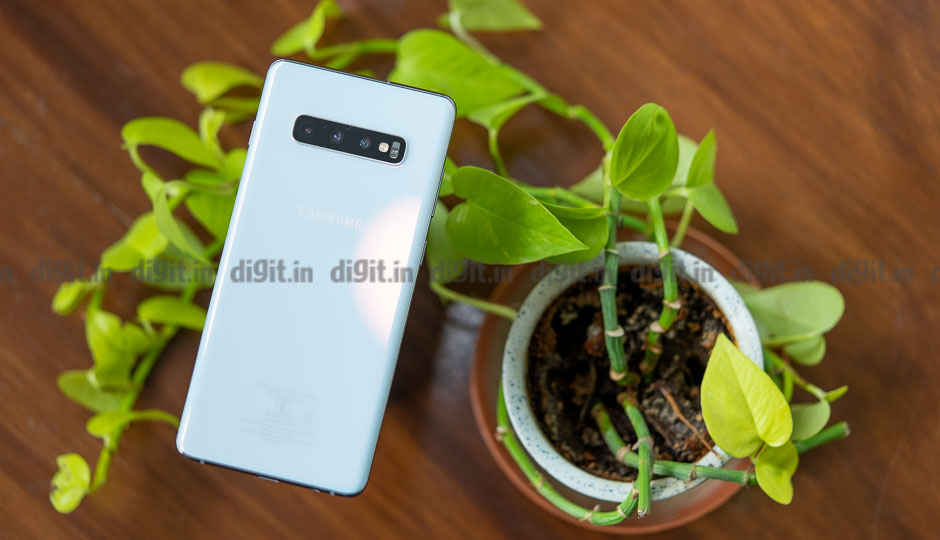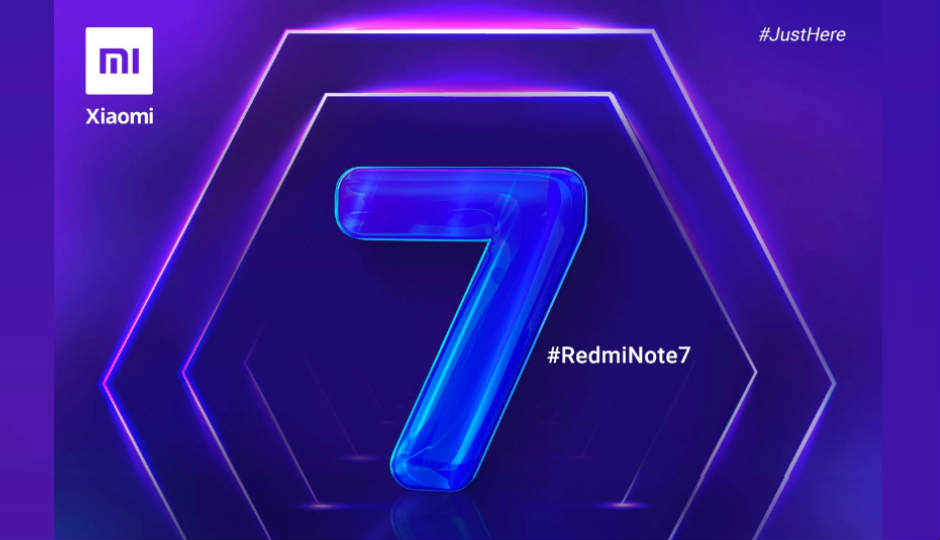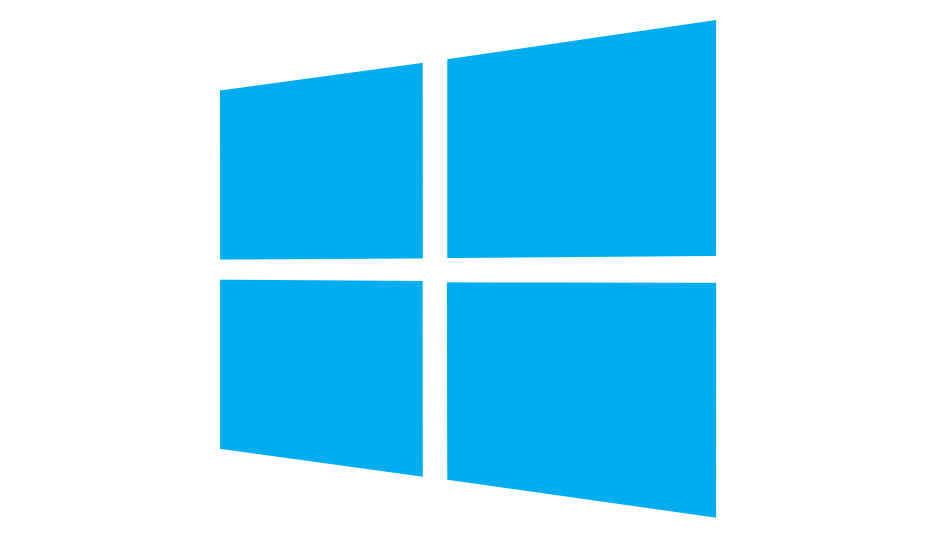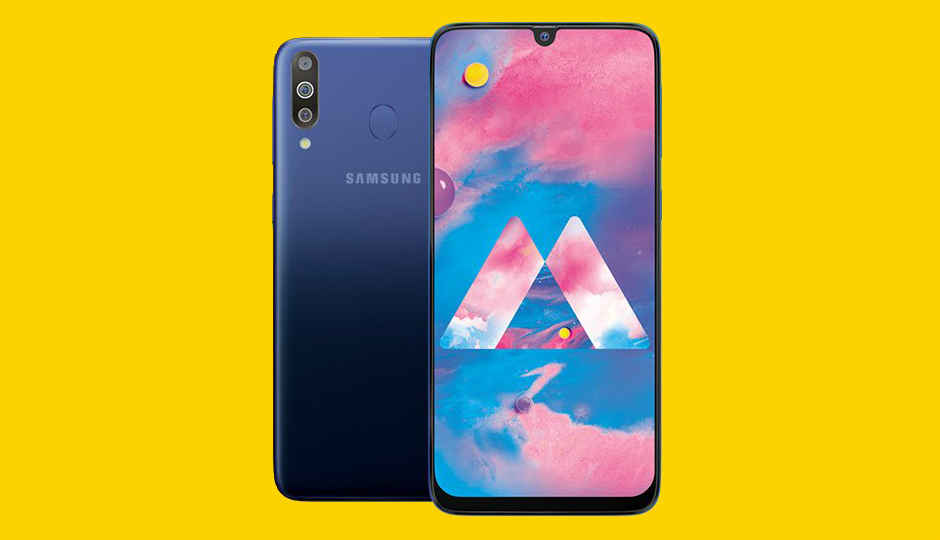 Highlights: Redmi Note 7 Pro launched in India along with the Redmi Note 7. After teasing the Redmi Note 7 for Xiaomi has finally launched the smartphone in India, along with the Redmi Note 7 Pro. In India, the company decided to make a global debut of the Redmi Note 7 Pro, which packs a 48MP Sony IMX586 sensor. While the Redmi Note 7 that was previously announced in China featured a 48MP Samsung G1 sensor, the company has changed the optics of the device for India. It now gets a 12MP primary sensor instead of the 48MP Samsung sensor. Redmi Note 7 Pro Specifications The phone features Aura Design, which is said to deliver immersive experience with thinner bezels. It features a 6.3-inch Full HD+ LTPS screen with a 19.5:9 waterdrop notch display design. The company says it has managed to incorporate a larger display in the same form factor. Features like Sunlight Display that boosts brightness and contrast, and Reading Mode which adjusts colour temperature to cut down on blue light are also present. The smartphone is powered by the new Qualcomm Snapdragon 675 SoC octa-core processor and comes with up to 6GB RAM and up to 128GB storage. As the company had earlier revealed, the Redmi Note 7 Pro comes equipped with a 48MP main rear camera, which is supplemented with a 5MP secondary sensor. It comes equipped with the Sony IMX586 sensor. The Sony sensor is a half-inch stacked CMOS sensor, which is touted to deliver better images in low-light. The primary camera features an f/1.79 aperture lens. The company says that by default, the Redmi Note 7’s camera captures 12MP images and to click an image in 48MP, one will need to navigate to Pro mode in the camera app. The camera can also detect from 33 scenes with AI scene detection and comes with AI portrait 2.0 that is said to enable adjustable bokeh, studio lighting and light trails features. The phone supports capturing 4K videos at 30fps and comes with EIS. On the front, the Note 7 Pro is equipped with a 13MP camera that also enables face unlock. The Redmi Note 7 Pro is protected by Gorilla Glass 5 display on both the front and the back and comes equipped with a Type-C port. It runs on MIUI 10 based on Android 9 Pie and is backed by a 4000mAh battery that supports Qualcomm Quick Charge 4. While the device supports 18W fast charging, one will get a 10W charger in the box. Redmi Note 7 Specifications We know almost everything there is to know about the Redmi Note 7 as it went official in China about a month ago. It is powered by a Qualcomm Snapdragon 660 SoC and is comes in three variants. It will be available in 3/32GB, 4/64GB and 6/64GB memory and storage variants. The handset sports a 6.3-inch LCD display that is protected by a Gorilla Glass 5 on top. It also features a 19.5:9 display aspect ratio and gets a waterdrop notch design. In terms of optics, the smartphone features a 12MP + 2MP dual rear camera setup. The company has apparently decided to ditch the 48MP Samsung GM-1 sensor, which can be found on the Redmi Note 7 that sells in China. The 12MP primary sensor has a 1.25µm pixel pitch, while the 5MP secondary camera helps in capturing bokeh images. On the front, it sports a 13MP sensor that supports AI portrait selfie, along with the face unlock feature. The phone also packs a 4,000mAh battery and like its more powerful sibling, supports Quick Charge 4.0. Redmi Note 7 Pro, Note 7 Price and Availability The Redmi Note 7 Pro comes in Neptune Blue, Nebula Red and Space Black colour variants. Its 4GB RAM, 64GB storage version is priced at Rs 13,999, while the 6GB RAM/128GB storage variant will cost Rs 16,999. The Redmi Note 7 will be available in Onyx Black, Ruby Red and the Sapphire Blue colour variants. Developing....
Highlights: Redmi Note 7 Pro launched in India along with the Redmi Note 7. After teasing the Redmi Note 7 for Xiaomi has finally launched the smartphone in India, along with the Redmi Note 7 Pro. In India, the company decided to make a global debut of the Redmi Note 7 Pro, which packs a 48MP Sony IMX586 sensor. While the Redmi Note 7 that was previously announced in China featured a 48MP Samsung G1 sensor, the company has changed the optics of the device for India. It now gets a 12MP primary sensor instead of the 48MP Samsung sensor. Redmi Note 7 Pro Specifications The phone features Aura Design, which is said to deliver immersive experience with thinner bezels. It features a 6.3-inch Full HD+ LTPS screen with a 19.5:9 waterdrop notch display design. The company says it has managed to incorporate a larger display in the same form factor. Features like Sunlight Display that boosts brightness and contrast, and Reading Mode which adjusts colour temperature to cut down on blue light are also present. The smartphone is powered by the new Qualcomm Snapdragon 675 SoC octa-core processor and comes with up to 6GB RAM and up to 128GB storage. As the company had earlier revealed, the Redmi Note 7 Pro comes equipped with a 48MP main rear camera, which is supplemented with a 5MP secondary sensor. It comes equipped with the Sony IMX586 sensor. The Sony sensor is a half-inch stacked CMOS sensor, which is touted to deliver better images in low-light. The primary camera features an f/1.79 aperture lens. The company says that by default, the Redmi Note 7’s camera captures 12MP images and to click an image in 48MP, one will need to navigate to Pro mode in the camera app. The camera can also detect from 33 scenes with AI scene detection and comes with AI portrait 2.0 that is said to enable adjustable bokeh, studio lighting and light trails features. The phone supports capturing 4K videos at 30fps and comes with EIS. On the front, the Note 7 Pro is equipped with a 13MP camera that also enables face unlock. The Redmi Note 7 Pro is protected by Gorilla Glass 5 display on both the front and the back and comes equipped with a Type-C port. It runs on MIUI 10 based on Android 9 Pie and is backed by a 4000mAh battery that supports Qualcomm Quick Charge 4. While the device supports 18W fast charging, one will get a 10W charger in the box. Redmi Note 7 Specifications We know almost everything there is to know about the Redmi Note 7 as it went official in China about a month ago. It is powered by a Qualcomm Snapdragon 660 SoC and is comes in three variants. It will be available in 3/32GB, 4/64GB and 6/64GB memory and storage variants. The handset sports a 6.3-inch LCD display that is protected by a Gorilla Glass 5 on top. It also features a 19.5:9 display aspect ratio and gets a waterdrop notch design. In terms of optics, the smartphone features a 12MP + 2MP dual rear camera setup. The company has apparently decided to ditch the 48MP Samsung GM-1 sensor, which can be found on the Redmi Note 7 that sells in China. The 12MP primary sensor has a 1.25µm pixel pitch, while the 5MP secondary camera helps in capturing bokeh images. On the front, it sports a 13MP sensor that supports AI portrait selfie, along with the face unlock feature. The phone also packs a 4,000mAh battery and like its more powerful sibling, supports Quick Charge 4.0. Redmi Note 7 Pro, Note 7 Price and Availability The Redmi Note 7 Pro comes in Neptune Blue, Nebula Red and Space Black colour variants. Its 4GB RAM, 64GB storage version is priced at Rs 13,999, while the 6GB RAM/128GB storage variant will cost Rs 16,999. The Redmi Note 7 will be available in Onyx Black, Ruby Red and the Sapphire Blue colour variants. Developing....from Latest Technology News https://ift.tt/2Em808E
 Highlights: The Samsung Galaxy S10+ is getting its first software update The update enables the user to remap the Bixby button It also enables a new feature called Instagram Mode It’s only been a few days since the global launch of the Samsung Galaxy S10+ and we’re already seeing a software update roll out to it. According to a recent report by Sammobile, the new Samsung flagship is getting an option to remap the Bixby button and a feature called Instagram Mode, apart from a list of bug fixes and stability improvements. Owners in France and Germany have reportedly already received the new update. Let’s review the known list of changes and additions in the Galaxy’s new software update. The most notable change is the ability to remap the Bixby button on the side of the phone’s body. It can be reprogrammed to launch an application of your choice, such as Facebook or WhatsApp. Samsung has been criticised in the past for removing the Bixby button remap feature from the software of some of its models. Users should appreciate its return on the Galaxy S10+. The software update enables Instagram Mode, a feature that allows users to capture and upload images directly to Instagram Stories from the device’s native camera app. According to Samsung CEO DJ Koh, Instagram Mode on the new Samsung Galaxy flagship delivers “the best Instagram experience on the market.” The update also brings a number of bug fixes and stability improvements, including improved fingerprint recognition and the overall stability of the default camera app. The top-of-the-line variant of the Samsung Galaxy S10+ is powered by a 7-nanometre Exynos 9820 chipset and 12GB of RAM. Internal storage is 1TB, with an option to expand it by 512GB. The Galaxy S10+ runs Android 9.0 Pie out of the box and ships with a 4,100mAh battery. Its display measures 6.4 inches diagonally and has a maximum resolution of 1440 x 3040 pixels. The Samsung Galaxy S10+ is expected to launch in India on March 6 at a starting price of Rs 73,990. Inline image courtesy: Sammobile Related Read: Specs Comparison: Samsung Galaxy S10+ vs Apple iPhone XS Max
Highlights: The Samsung Galaxy S10+ is getting its first software update The update enables the user to remap the Bixby button It also enables a new feature called Instagram Mode It’s only been a few days since the global launch of the Samsung Galaxy S10+ and we’re already seeing a software update roll out to it. According to a recent report by Sammobile, the new Samsung flagship is getting an option to remap the Bixby button and a feature called Instagram Mode, apart from a list of bug fixes and stability improvements. Owners in France and Germany have reportedly already received the new update. Let’s review the known list of changes and additions in the Galaxy’s new software update. The most notable change is the ability to remap the Bixby button on the side of the phone’s body. It can be reprogrammed to launch an application of your choice, such as Facebook or WhatsApp. Samsung has been criticised in the past for removing the Bixby button remap feature from the software of some of its models. Users should appreciate its return on the Galaxy S10+. The software update enables Instagram Mode, a feature that allows users to capture and upload images directly to Instagram Stories from the device’s native camera app. According to Samsung CEO DJ Koh, Instagram Mode on the new Samsung Galaxy flagship delivers “the best Instagram experience on the market.” The update also brings a number of bug fixes and stability improvements, including improved fingerprint recognition and the overall stability of the default camera app. The top-of-the-line variant of the Samsung Galaxy S10+ is powered by a 7-nanometre Exynos 9820 chipset and 12GB of RAM. Internal storage is 1TB, with an option to expand it by 512GB. The Galaxy S10+ runs Android 9.0 Pie out of the box and ships with a 4,100mAh battery. Its display measures 6.4 inches diagonally and has a maximum resolution of 1440 x 3040 pixels. The Samsung Galaxy S10+ is expected to launch in India on March 6 at a starting price of Rs 73,990. Inline image courtesy: Sammobile Related Read: Specs Comparison: Samsung Galaxy S10+ vs Apple iPhone XS Max Highlights Snapdragon variant of Galaxy S10 beats Exynos variant on PCMark 2.0 Exynos 9820 20 percent faster than Exynos 9810 Samsung, for the last few years, has insisted on shipping its flagship smartphone with two different chipsets in individual markets. While countries like the U.S. get the Qualcomm Snapdragon-powered variant, India gets the Samsung Galaxy S10 powered by the company’s own Exynos 9820 processor. AnandTech has run early benchmarks on the Snapdragon and Exynos variants of the S10 and the results are rather interesting. The benchmarks run on the two phones include PCMark 2.0 and Speedometer 2.0. Traditionally, we have seen the Snapdragon-powered Galaxy S smartphones to be faster than their Exynos counterparts, and this report shows nothing different. For the most part, the Snapdragon 855 powered Samsung Galaxy S10 beats the Exynos variant by a large margin in most of PCMark’s testing parameters, including the Web Browsing, Photo Editing and even Writing 2.0 sub-tests. However, the findings reveal a more promising fact. Across all the tests, the Exynos 9820 performs significantly better than the Exynos 9810-powered S9 and Note 9. The last three generations of Samsung’s flagship Exynos chips had issues with the scheduler, which caused benchmark numbers on the chips to be lower than expected, but it appears that Samsung has fixed the problem with the new 9820 chipsets. AnandTech’s findings report a 20-percent improvement in performance on the new Exynos 9820 over the Exynos 9810, which is well within the reasonable realm of improvement. We have the Exynos variant of Samsung’s newest flagship, the Samsung Galaxy S10+ and will be putting the phone through our revamped testing process to determine just how much of a true performance bump it offers in comparison to the previous generation flagships from Samsung. Related Reads: Samsung Galaxy S10e First Impressions: Compact and uncompromising
Highlights Snapdragon variant of Galaxy S10 beats Exynos variant on PCMark 2.0 Exynos 9820 20 percent faster than Exynos 9810 Samsung, for the last few years, has insisted on shipping its flagship smartphone with two different chipsets in individual markets. While countries like the U.S. get the Qualcomm Snapdragon-powered variant, India gets the Samsung Galaxy S10 powered by the company’s own Exynos 9820 processor. AnandTech has run early benchmarks on the Snapdragon and Exynos variants of the S10 and the results are rather interesting. The benchmarks run on the two phones include PCMark 2.0 and Speedometer 2.0. Traditionally, we have seen the Snapdragon-powered Galaxy S smartphones to be faster than their Exynos counterparts, and this report shows nothing different. For the most part, the Snapdragon 855 powered Samsung Galaxy S10 beats the Exynos variant by a large margin in most of PCMark’s testing parameters, including the Web Browsing, Photo Editing and even Writing 2.0 sub-tests. However, the findings reveal a more promising fact. Across all the tests, the Exynos 9820 performs significantly better than the Exynos 9810-powered S9 and Note 9. The last three generations of Samsung’s flagship Exynos chips had issues with the scheduler, which caused benchmark numbers on the chips to be lower than expected, but it appears that Samsung has fixed the problem with the new 9820 chipsets. AnandTech’s findings report a 20-percent improvement in performance on the new Exynos 9820 over the Exynos 9810, which is well within the reasonable realm of improvement. We have the Exynos variant of Samsung’s newest flagship, the Samsung Galaxy S10+ and will be putting the phone through our revamped testing process to determine just how much of a true performance bump it offers in comparison to the previous generation flagships from Samsung. Related Reads: Samsung Galaxy S10e First Impressions: Compact and uncompromising Highlights: The next generation of Porsche Macan will be all electric, announces Porsche It will share the Porsche Taycan's 800-volt architecture Porsche predicts half of its models to be electric by 2025 The Macan is Porsche’s top-selling luxury crossover SUV. It’s been around in the market since 2014 and is now about to receive a major transformation. According to a news release sent out by Porsche, the next generation of the Porsche Macan will be fully electric. The big SUV joins the recently announced Taycan in this new electric revolution, on which Porsche will be investing six billion euros by the year 2022. According to Porsche, the decision to build the next-generation Macan at the company’s Leipzig plant was taken in early July last year. The German car maker believes the Macan “fires the starting pistol for electrification” of cars at Porsche. Like the Taycan, which—in turn—shares its architecture with the Audi e-tron GT, the Macan will use a newly developed 800-volt architecture. By 2025, Porsche expects fifty percent of all its vehicles to be electric. “Over the next ten years we will focus on a drive mix consisting of even further optimised petrol engines, plug-in hybrid models, and purely electrically operated sports cars. Our aim is to take a pioneering role in technology, and for this reason we will continue to consistently align the company with the mobility of the future,” commented Oliver Blume, Chairman of the Board of Management at Porsche AG. About two years ago, the German car maker expanded its production facility at Leipzig to double its production rate. The factory currently pushes out 90,000 units every year for global markets, as opposed to the 40,000 units it pushed out when the plant began operation in 2014. Recent news around the electric Porsche Taycan suggested that it would get a Turbo version at the time of its launch. It will be a 600-horsepower performance variant that’s expected to cost about Rs 90,95,000 in India. If Porsche follows the same variant separation strategy with the other electric cars in its stable, the Macan too could get a Turbo version. The name Turbo once referred to variants with turbocharged engines but has now evolved to refer to the top-end version in any Porsche model, electric vehicles included. Cover image courtesy: Porsche AG Related Read: All-electric Porsche Taycan to get a 'Turbo' variant, will start from $130,000
Highlights: The next generation of Porsche Macan will be all electric, announces Porsche It will share the Porsche Taycan's 800-volt architecture Porsche predicts half of its models to be electric by 2025 The Macan is Porsche’s top-selling luxury crossover SUV. It’s been around in the market since 2014 and is now about to receive a major transformation. According to a news release sent out by Porsche, the next generation of the Porsche Macan will be fully electric. The big SUV joins the recently announced Taycan in this new electric revolution, on which Porsche will be investing six billion euros by the year 2022. According to Porsche, the decision to build the next-generation Macan at the company’s Leipzig plant was taken in early July last year. The German car maker believes the Macan “fires the starting pistol for electrification” of cars at Porsche. Like the Taycan, which—in turn—shares its architecture with the Audi e-tron GT, the Macan will use a newly developed 800-volt architecture. By 2025, Porsche expects fifty percent of all its vehicles to be electric. “Over the next ten years we will focus on a drive mix consisting of even further optimised petrol engines, plug-in hybrid models, and purely electrically operated sports cars. Our aim is to take a pioneering role in technology, and for this reason we will continue to consistently align the company with the mobility of the future,” commented Oliver Blume, Chairman of the Board of Management at Porsche AG. About two years ago, the German car maker expanded its production facility at Leipzig to double its production rate. The factory currently pushes out 90,000 units every year for global markets, as opposed to the 40,000 units it pushed out when the plant began operation in 2014. Recent news around the electric Porsche Taycan suggested that it would get a Turbo version at the time of its launch. It will be a 600-horsepower performance variant that’s expected to cost about Rs 90,95,000 in India. If Porsche follows the same variant separation strategy with the other electric cars in its stable, the Macan too could get a Turbo version. The name Turbo once referred to variants with turbocharged engines but has now evolved to refer to the top-end version in any Porsche model, electric vehicles included. Cover image courtesy: Porsche AG Related Read: All-electric Porsche Taycan to get a 'Turbo' variant, will start from $130,000 The Xiaomi Redmi Note 7 will be launched in India on Thursday. The company is hosting an event in New Delhi to unveil the mid-ranger that is already available in China. Like with every Redmi Note device, Xiaomi plans to cut ahead of the competition this time as well. The Redmi Note 7 offers a 48-megapixel camera on the back, which Xiaomi hopes will set the phone apart from the rest. The company is also expected to announce the Redmi Note 7 Pro and the Redmi Go at the event. Over the course of the past few months, multiple leaks and rumours have given us an idea how the Redmi Note 7 Pro will turn out to be. Before the phone launches in India, here’s everything you need to know — How to watch the Xiaomi Redmi Note 7 launch live? The Redmi Note 7 launch is expected to start at 11:30AM. The event will be streamed live on Xiaomi’s social pages on YouTube, Twitter and Facebook. Digit will also go live from the event, so you can tune into our Instagram page to get all the action. What does the Redmi Note 7 offer? The Redmi Note 7 went official in China a month ago. The phone offers a 48MP Samsung GM-1 sensor on the back coupled with a 5MP depth sensor for portrait photos. On the front, there’s a 13MP selfie camera, housed in a waterdrop notch. There’s a 6.3-inch LCD display with Gorilla Glass 5 on top. The phone is powered by a Qualcomm Snapdragon 660 SoC and is offered in three RAM/storage variants. Xiaomi is expected to launch the phone in 3/32GB, 4/64GB and 6/64GB variants. Xiaomi also claimed the phone to have exceptional durability thanks to the protective glass on both sides. The phone also packs a 4,000mAh battery and now finally supports fast charging. The Redmi Note 7 is expected to come in a range of gradient colour finishes including red, blue and black and twilight gold. Will Xiaomi launch the Redmi Note 7 Pro? At the China launch of the Redmi Note 7, Xiaomi did tease the launch of the pro variant. After that, Lu Weibing, Redmi General Manager, shared the Redmi Note 7 Pro will be announced after the Xiaomi Mi 9. The Mi 9 launched on February 20 and the timeline adds up. Furthermore, we have seen multiple leaks of the phone detailing the specs and features. Based on the latest leak by smartphone leakster @ishanagarwal24, the Redmi Note 7 Pro is expected to bring the flagship Sony IMX586 sensor with 48MP resolution and a 1/2-inch sensor size. If the recently launched Honor View 20 is anything to go by, the camera offers a good amount of detail and has features like pixel-binning to improve low-light photography. The form factor is expected to remain the same as the Redmi Note 7 — A 6.3-inch display with a waterdrop notch. However, under the hood, the phone is expected to pack the Snapdragon 675 SoC, which we saw debut in the Vivo V15 Pro. Based on our performance comparison, the chipset is much more powerful than the Snapdragon 660, sometimes even beating the Snapdragon 710. What about the Xiaomi Redmi Go? The Xiaomi Redmi Go is an Android-Go device made for the entry-level segment. It’s Xiaomi’s first smartphone with Android Go and is expected to run a toned-down version of MIUI. The phone went official with a 5-inch HD display and a Snapdragon 425 SoC under the hood. The phone is based on Android Oreo (Go Edition) and offers 1GB RAM and 8GB of expandable storage. On the back is an 8MP camera while the front houses a 5MP selfie shooter. The phone packs a 2,200mAh battery. Redmi Note 7, Redmi Note 7 Pro, Redmi Go Price The Xiaomi Redmi Note 7 was launched for an astoundingly low price of RMB 999 in China which roughly converts to Rs 10,000 in India. While the phone certainly won’t be priced that cheap, considering import duties that Xiaomi has to pay for the components, we expect the phone to be priced under Rs 15,000. The Redmi Note 7 Pro with the 48MP Sony sensor is expected to fetch a higher price. We expect the price to be around Rs 16,000. The entry-level Redmi Go is expected to be priced below the going market price of other Android Go phones like the Samsung Galaxy J2 Core and the Nokia 1. WinFuture reports the phone will be priced under 80 Euros in Europe, which rough converts to Rs 6,400 in India.
The Xiaomi Redmi Note 7 will be launched in India on Thursday. The company is hosting an event in New Delhi to unveil the mid-ranger that is already available in China. Like with every Redmi Note device, Xiaomi plans to cut ahead of the competition this time as well. The Redmi Note 7 offers a 48-megapixel camera on the back, which Xiaomi hopes will set the phone apart from the rest. The company is also expected to announce the Redmi Note 7 Pro and the Redmi Go at the event. Over the course of the past few months, multiple leaks and rumours have given us an idea how the Redmi Note 7 Pro will turn out to be. Before the phone launches in India, here’s everything you need to know — How to watch the Xiaomi Redmi Note 7 launch live? The Redmi Note 7 launch is expected to start at 11:30AM. The event will be streamed live on Xiaomi’s social pages on YouTube, Twitter and Facebook. Digit will also go live from the event, so you can tune into our Instagram page to get all the action. What does the Redmi Note 7 offer? The Redmi Note 7 went official in China a month ago. The phone offers a 48MP Samsung GM-1 sensor on the back coupled with a 5MP depth sensor for portrait photos. On the front, there’s a 13MP selfie camera, housed in a waterdrop notch. There’s a 6.3-inch LCD display with Gorilla Glass 5 on top. The phone is powered by a Qualcomm Snapdragon 660 SoC and is offered in three RAM/storage variants. Xiaomi is expected to launch the phone in 3/32GB, 4/64GB and 6/64GB variants. Xiaomi also claimed the phone to have exceptional durability thanks to the protective glass on both sides. The phone also packs a 4,000mAh battery and now finally supports fast charging. The Redmi Note 7 is expected to come in a range of gradient colour finishes including red, blue and black and twilight gold. Will Xiaomi launch the Redmi Note 7 Pro? At the China launch of the Redmi Note 7, Xiaomi did tease the launch of the pro variant. After that, Lu Weibing, Redmi General Manager, shared the Redmi Note 7 Pro will be announced after the Xiaomi Mi 9. The Mi 9 launched on February 20 and the timeline adds up. Furthermore, we have seen multiple leaks of the phone detailing the specs and features. Based on the latest leak by smartphone leakster @ishanagarwal24, the Redmi Note 7 Pro is expected to bring the flagship Sony IMX586 sensor with 48MP resolution and a 1/2-inch sensor size. If the recently launched Honor View 20 is anything to go by, the camera offers a good amount of detail and has features like pixel-binning to improve low-light photography. The form factor is expected to remain the same as the Redmi Note 7 — A 6.3-inch display with a waterdrop notch. However, under the hood, the phone is expected to pack the Snapdragon 675 SoC, which we saw debut in the Vivo V15 Pro. Based on our performance comparison, the chipset is much more powerful than the Snapdragon 660, sometimes even beating the Snapdragon 710. What about the Xiaomi Redmi Go? The Xiaomi Redmi Go is an Android-Go device made for the entry-level segment. It’s Xiaomi’s first smartphone with Android Go and is expected to run a toned-down version of MIUI. The phone went official with a 5-inch HD display and a Snapdragon 425 SoC under the hood. The phone is based on Android Oreo (Go Edition) and offers 1GB RAM and 8GB of expandable storage. On the back is an 8MP camera while the front houses a 5MP selfie shooter. The phone packs a 2,200mAh battery. Redmi Note 7, Redmi Note 7 Pro, Redmi Go Price The Xiaomi Redmi Note 7 was launched for an astoundingly low price of RMB 999 in China which roughly converts to Rs 10,000 in India. While the phone certainly won’t be priced that cheap, considering import duties that Xiaomi has to pay for the components, we expect the phone to be priced under Rs 15,000. The Redmi Note 7 Pro with the 48MP Sony sensor is expected to fetch a higher price. We expect the price to be around Rs 16,000. The entry-level Redmi Go is expected to be priced below the going market price of other Android Go phones like the Samsung Galaxy J2 Core and the Nokia 1. WinFuture reports the phone will be priced under 80 Euros in Europe, which rough converts to Rs 6,400 in India. Highlights: Microsoft's new Lite OS could take on Chrome OS It will share its core with Windows 10 Rumours of a Microsoft equivalent to the well-established Chrome OS have been making rounds on the internet for a few weeks now. It has been referred to in the past as “Windows Lite” but it appears we have an accurate name now. Brand Sams of Petri believes Microsoft’s new operating system will be called Lite OS and is currently codenamed “Santorini”. Microsoft is reportedly working very hard to bring the software out as soon as possible. When it releases, Lite OS will target Chromebooks, which are mostly entry-level laptops that run Chrome OS. Though Lite OS is expected to be launched as a standalone operating system for PCs with basic specifications, it’s believed to share its core with Windows. The Petri writer went so far as to develop a mockup of Lite OS’ user interface. “The mockup I created at the top of this post is an accurate portrayal of what the OS looks like in its current iteration. Despite the updated UI, the OOBE (Out of Box Experience) is still similar to that of Windows 10,” writes Sams. While it may appear as if Microsoft is splitting its Windows 10 operating system into two streams (one for light users and another for heavy users), Sams is convinced that that’s not the case. Lite OS will eventually cover most of the functionality found in Windows 10 today. Lite OS is predicted to run only Universal Windows Platform (UWP) apps and Progressive Web Apps (PWAs) at the moment but may include support for traditional Win32 applications in the future. This isn’t Microsoft’s first attempt at creating a Windows spin-off that’s designed to run on entry-level PCs. Windows RT was born out of Windows 8.1 in 2012 in an attempt to cater to “thin and light PCs that have extended battery life and are designed for life on the go”. Windows RT was received rather badly during its time but there is a chance Lite OS will win where Windows RT failed. For beginners, both the quality and quantity of UWP apps on the Microsoft Store have increased. Also, Microsoft is working hard to make many traditional Win32 applications UWP apps. With any luck, laptops under the Rs 25,000 mark could ship with Lite OS in the near future instead of DOS or Linux. Inline image courtesy: Petri Related Read: Windows 7 support to end in a year, Microsoft says
Highlights: Microsoft's new Lite OS could take on Chrome OS It will share its core with Windows 10 Rumours of a Microsoft equivalent to the well-established Chrome OS have been making rounds on the internet for a few weeks now. It has been referred to in the past as “Windows Lite” but it appears we have an accurate name now. Brand Sams of Petri believes Microsoft’s new operating system will be called Lite OS and is currently codenamed “Santorini”. Microsoft is reportedly working very hard to bring the software out as soon as possible. When it releases, Lite OS will target Chromebooks, which are mostly entry-level laptops that run Chrome OS. Though Lite OS is expected to be launched as a standalone operating system for PCs with basic specifications, it’s believed to share its core with Windows. The Petri writer went so far as to develop a mockup of Lite OS’ user interface. “The mockup I created at the top of this post is an accurate portrayal of what the OS looks like in its current iteration. Despite the updated UI, the OOBE (Out of Box Experience) is still similar to that of Windows 10,” writes Sams. While it may appear as if Microsoft is splitting its Windows 10 operating system into two streams (one for light users and another for heavy users), Sams is convinced that that’s not the case. Lite OS will eventually cover most of the functionality found in Windows 10 today. Lite OS is predicted to run only Universal Windows Platform (UWP) apps and Progressive Web Apps (PWAs) at the moment but may include support for traditional Win32 applications in the future. This isn’t Microsoft’s first attempt at creating a Windows spin-off that’s designed to run on entry-level PCs. Windows RT was born out of Windows 8.1 in 2012 in an attempt to cater to “thin and light PCs that have extended battery life and are designed for life on the go”. Windows RT was received rather badly during its time but there is a chance Lite OS will win where Windows RT failed. For beginners, both the quality and quantity of UWP apps on the Microsoft Store have increased. Also, Microsoft is working hard to make many traditional Win32 applications UWP apps. With any luck, laptops under the Rs 25,000 mark could ship with Lite OS in the near future instead of DOS or Linux. Inline image courtesy: Petri Related Read: Windows 7 support to end in a year, Microsoft says Highlights: Samsung Galaxy M30 launched in India. The smartphone features the new Exynos 7904 processor. It comes equipped with a triple rear camera setup. After teasing and revealing some aspects of the Samsung Galaxy M30, the company has launched the phone in India. It is the third device in Samsung’s M series of handsets and it brings a triple-rear camera to the sub 20k price segment. The Galaxy M30 is expected to go up against the Xiaomi Redmi Note 7 smartphone, which will launch tomorrow in India and is priced in the same range as the Redmi Note 7 is rumoured to be placed in. Highlights of the phone include a large 5000mAh battery and the new Exynos 7904 octa-core processor that it is powered by. Samsung Galaxy M30 Specifications The Samsung Galaxy M30 is powered by the Exynos 7904 octa-core processor that is clocked at 1.8Ghz. It is the newest SoC by the company, which is debuting in a device. The phone comes in two variants. One with 4GB RAM, coupled with 64GB of internal storage and another with 6GB RAM with 128GB of onboard storage. The handset features a 6.4-inch Full HD+ Super AMOLED Infinity U display and will be available in Gradation Black and Gradation Blue colour models. The device sports a dedicated slot for microSD card and supports memory expansion till 512GB. It is backed by a large 5000mAh battery. Coming to the optics, the Galaxy M30 sports a 13MP + 5MP + 5MP triple rear-camera setup. Here, the 13MP sensor is the main camera with an f/1.9 aperture lens, while the 5MP sensor assists in capturing bokeh images. The other 5MP sensor is paired with an f/2.4 lens that enables shooting ultra-wide images. On the front, the device comes equipped with a 16MP sensor that is coupled with an f/2.0 aperture lens. It runs on Samsung Experience 9.5 and comes with Widevine L1 certification. It sports a fingerprint sensor on the rear and also comes with face unlock. Samsung Galaxy M30 Pricing and Availability The Samsung Galaxy M30 is priced at Rs 14,990 for the 4GB RAM, 64GB storage variant and is priced at Rs 17,990 for the 6GB RAM, 128GB version. It will go on sale via Samsung Shop and Amazon at 12 PM on March 7 in Gradation Black and Gradation Blue colour models.
Highlights: Samsung Galaxy M30 launched in India. The smartphone features the new Exynos 7904 processor. It comes equipped with a triple rear camera setup. After teasing and revealing some aspects of the Samsung Galaxy M30, the company has launched the phone in India. It is the third device in Samsung’s M series of handsets and it brings a triple-rear camera to the sub 20k price segment. The Galaxy M30 is expected to go up against the Xiaomi Redmi Note 7 smartphone, which will launch tomorrow in India and is priced in the same range as the Redmi Note 7 is rumoured to be placed in. Highlights of the phone include a large 5000mAh battery and the new Exynos 7904 octa-core processor that it is powered by. Samsung Galaxy M30 Specifications The Samsung Galaxy M30 is powered by the Exynos 7904 octa-core processor that is clocked at 1.8Ghz. It is the newest SoC by the company, which is debuting in a device. The phone comes in two variants. One with 4GB RAM, coupled with 64GB of internal storage and another with 6GB RAM with 128GB of onboard storage. The handset features a 6.4-inch Full HD+ Super AMOLED Infinity U display and will be available in Gradation Black and Gradation Blue colour models. The device sports a dedicated slot for microSD card and supports memory expansion till 512GB. It is backed by a large 5000mAh battery. Coming to the optics, the Galaxy M30 sports a 13MP + 5MP + 5MP triple rear-camera setup. Here, the 13MP sensor is the main camera with an f/1.9 aperture lens, while the 5MP sensor assists in capturing bokeh images. The other 5MP sensor is paired with an f/2.4 lens that enables shooting ultra-wide images. On the front, the device comes equipped with a 16MP sensor that is coupled with an f/2.0 aperture lens. It runs on Samsung Experience 9.5 and comes with Widevine L1 certification. It sports a fingerprint sensor on the rear and also comes with face unlock. Samsung Galaxy M30 Pricing and Availability The Samsung Galaxy M30 is priced at Rs 14,990 for the 4GB RAM, 64GB storage variant and is priced at Rs 17,990 for the 6GB RAM, 128GB version. It will go on sale via Samsung Shop and Amazon at 12 PM on March 7 in Gradation Black and Gradation Blue colour models.